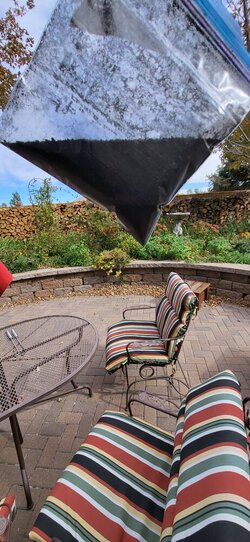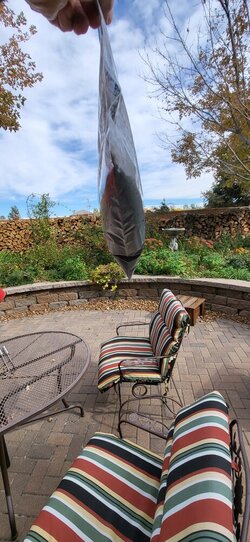Happy fall all. Just got done with my annual fall sweep. Soot-eater from bottom up. Roughly 26' straight up. about 15' of that is DVL to the ceiling transition support box. Photos attached of this year's clean out amount after a little over 3 cords of pine. Maybe a quart at most, very fluffy, almost zero sparkly stuff.
All is good (in my mind at least) even though it is a little more than I usually see each previous year. Probably because I toned things down a little last year after following a few threads here talking about high flue temps and recommendations. Full disclosure, I'm one of those stove top temp only guys at this point in time. Maybe I'll install a flue thermometer this year just to verify my burn.
95% of that amount fell down when the soot-eater reached the DVL to Class A transition. Below the transition, almost nothing. Above it, a few black sprinkles. It's been this way for the 10 years I've been running this stove. The question -- Any thoughts why the build up is only at the transition and is this normal?


All is good (in my mind at least) even though it is a little more than I usually see each previous year. Probably because I toned things down a little last year after following a few threads here talking about high flue temps and recommendations. Full disclosure, I'm one of those stove top temp only guys at this point in time. Maybe I'll install a flue thermometer this year just to verify my burn.
95% of that amount fell down when the soot-eater reached the DVL to Class A transition. Below the transition, almost nothing. Above it, a few black sprinkles. It's been this way for the 10 years I've been running this stove. The question -- Any thoughts why the build up is only at the transition and is this normal?



